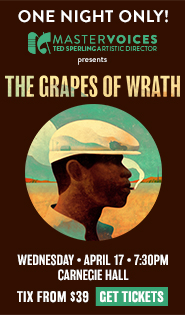A Leap Day of faith with Mazzoli & Moran together and apart

There is a hoary Leap Day tradition that women may take the initiative on February 29 in proposing marriage. While there were no marriage proposals at Merkin Concert Hall Saturday night two notable female composers did unveil a rewarding, if perhaps surprising, new musical relationship.
The joint piano concert by Missy Mazzoli and Kelly Moran, part of Merkin’s Ecstatic Music Festival, seemed to be shaping up as one of those worlds-in-collision events. Currently composer in residence with the Chicago Symphony Orchestra, Mazzoli iss the well-established, much-commissioned purveyor to orchestras and opera houses (including, soon, the Metropolitan) while Moran is the self-producing outsider with a large Instagram following for her prepared piano-electronics-video creations.
But on this night, the big bang never happened, and the two planets settled instead into a very agreeable orbit around each other. Each composer led off with a piano set of her own compositions (solo for Moran, Mazzoli partnering with violinist Olivia De Prato), and the concert closed with two world premieres—one piece by each, written for the two composers to play together.
Their meeting in the middle was even somewhat past the middle, as Mazzoli handled all the electronic processing for the night, while Moran made piano solo versions of her multimedia pieces for the occasion.
As they told it onstage to radio host John Schaefer, who was emceeing the concert and recording it for future broadcast, the two composers had admired each other’s work for years, and all it took was a suggestion from someone at Ecstatic Music to make a collaboration seem obvious. (“It was like, ‘Duh!’” Mazzoli said.)
First, however, the composers introduced themselves individually, Mazzoli leading off at the piano with violinist De Prato, herself an internationally-recognized exponent of new music. It was De Prato’s recording of Mazzoli’s Vespers for violin and electronics that earned the piece a Grammy nomination in 2018 for best contemporary classical composition.
In the first piece, A Thousand Tongues, and elsewhere in the set, Mazzoli’s piano was limited to filling in and reinforcing the electronic tracks as De Prato interacted with them using technique ranging from tiny bow scratches to ponticello to harmonics to full-throated song.
The middle three of the five pieces were played continuously. Vespers—recalling Monteverdi with brisk violin phrases and long vocal tones in the electronics—was the sandwich filling between Tooth and Nail, a vigorous violin fantasy over a fast-repeating drone note. Orizzonte offered a brief dirge in which Mazzoli stepped forward with sonorous piano chords.
The somber mood continued in the closing piece, A Song for Mick Kelly, with agitated string-crossing in the violin over long piano chords and a swell of electronic organ tones. Here as elsewhere, familiar triad chords were the foundation of Mazzoli’s harmony, with enough electronic processing to make it modern.
Triads vibrated even more clearly in Moran’s “songs” (as she called them) for prepared piano, often in two-chord or four-chord repeating patterns under variations and elaborations, giving the music a bit of a Pachelbel-canon feel.
A favorite harmonic scheme in several songs was alternating the relative major and minor, e.g., C major to A minor and back.
The music’s interest derived from ever-shifting figurations and the novel timbres of the prepared piano. (Two lidless Steinway concert grands were onstage, one “prepared.”) Moran made one “preparation” do for the whole evening, without adding or subtracting objects inside the instrument.
Avant-garde techniques have their traditions too, and for this concert Moran bypassed rubber snakes and hair brushes in favor of good old John-Cagean metal screws and bolts between the strings. She seemed to work octave by octave, so that the highest register had a bell-like tone, the upper middle resembled a koto, the lower middle the lute stop on a harpsichord, and the bass a piano tone, but muted. The timbral mix depended on where a tune or accompaniment was placed on the keyboard.
Moran said the first part of her set of eight or so songs were items from her two albums, and the last two were world premieres of two new multimedia works, adapted for piano solo. What she played didn’t always match the printed program, and she referred the audience to her Instagram page for a playlist.
Moran’s approach to titles seems rather casual anyway. The evocative title of her new piece for two pianos, Don’t Trust Mirrors, derived, she said, from her experience of re-learning to drive after years of living in New York City.
What can be said is Moran’s music tended to sound like metrically free improvisation without an obvious beat, and its Asian timbres, pentatonic tunes, and liberal pedaling often recalled Debussy’s orientalism. Unexpected timbral contrasts arose often, such as Chopinesque arpeggios in the bass accompanying a twangy harpsichord melody in the right hand.
Moran’s two new songs included a carillon-like item with jazzy rhythmic play in twos and threes, and a tune in slow chords elaborated in flowing figures. It was, in general, not a night for virtuoso piano display or conservatory-style chord voicing, but a more relaxed approach, especially in Moran’s playing, tending toward a pop sound—and no less earworthy for that.
Don’t Trust Mirrors for the two pianos artfully contrasted chirpy phrases in the prepared piano with gentle arpeggios growing to ocean swells in the other one. A magical effect occurred in the last pages, a long diminuendo with the pianists exchanging roles, the natural piano echoing the chirps while the arpeggios tinkled in the prepared instrument’s high “bell” register.
Mazzoli’s The Night Ahead and No Real Fate (a title borrowed, she said, from the painter and novelist Sam Pink) had the two players seated at the natural piano, as a single note on the piano grew into a quavering electronic sound, then a shimmering chord, then a kind of percussion track to Glassian piano arpeggios. Three stark bass notes and high chords brought the piece to an abrupt end, its “fate” unknown.
Ecstatic Music continues with Bell Orchestre & Metropolis Ensemble



